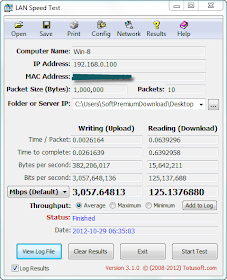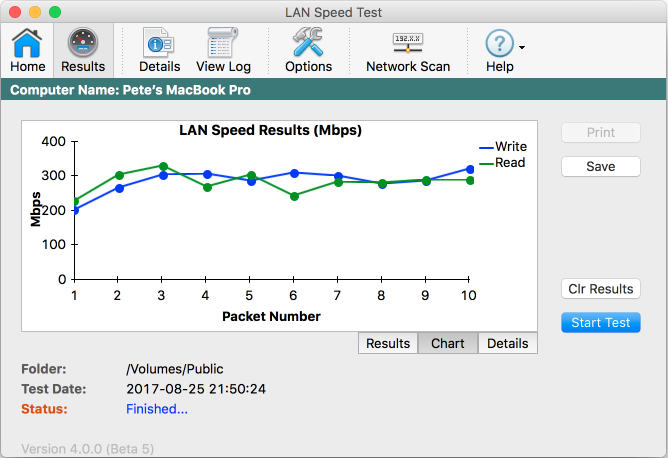

When providers host their own speed tests they eliminate the variables that you're here to test. A third party opinion is necessary and the provider shouldn't be allowed anywhere near the process. Testing with network storage devices (NAS) is not recommended as most of them are considerably slower than listed (there are exceptions).We believe that it's a conflict of interest when Internet service providers operate their own speed tests. His laptop, a second short ethernet cable and some simple file transfers will do the trick. If you only want to check wireless connection, you can try copying some large files into your Saved Photos folder on your iPhone.įor your wired ethernet testing, I'd suggest having a friend bring over a 1000 BaseT laptop to do your wired ethernet testing. You won't be able test your wired internal network speeds with your iPhone as the connection is wireless. On the other hand, my computers on the powerline technology I use in part of the house to cut down on the ethernet cables along walls only tested at 4 MB/sec (even though it's theoretical maximum should have been closer to 40 MB/sec). I recently upgraded my own router from 100 BaseT to 1000 BaseT (my old gigabit router had failed about a year ago) and had my internal transfer speeds jump from 6 MB/sec to 30 MB/sec. Real world speeds of 100 BaseT are 4.5 to 6 MB/sec. Hence the bottleneck will be your router. Any recent Mac (last six years) has 1000 BaseT (aka gigabit) ethernet (if it has ethernet at all, the USB to Ethernet adapter is just 100 BaseT).

It's fairly easy to figure out what your speeds will be. Just streaming won't test the limits of your network as most streaming will be in easy territory of 500 kb/sec, although you could try streaming an original MP4 from a DSLR to see if that chokes your network (and at what speed watching the transfer rates in either Activity Monitor, MenuMeters or iStat Menus). With the Apple TV 4, you'd need to jailbreak it to be able to directly copy media onto the drive (very strange). With version three and earlier (the common black one), there's no local storage so you won't have much luck testing the upper limits.

This depends on which version of the Apple TV you have. Alternatives include MenuMeters or iStat Menus which put the speeds right up in the menu bar. The easy built-in network speeds monitor is in Activity Monitor at the bottom of the main window. The place to monitor the speeds of course is your Mac.


 0 kommentar(er)
0 kommentar(er)
